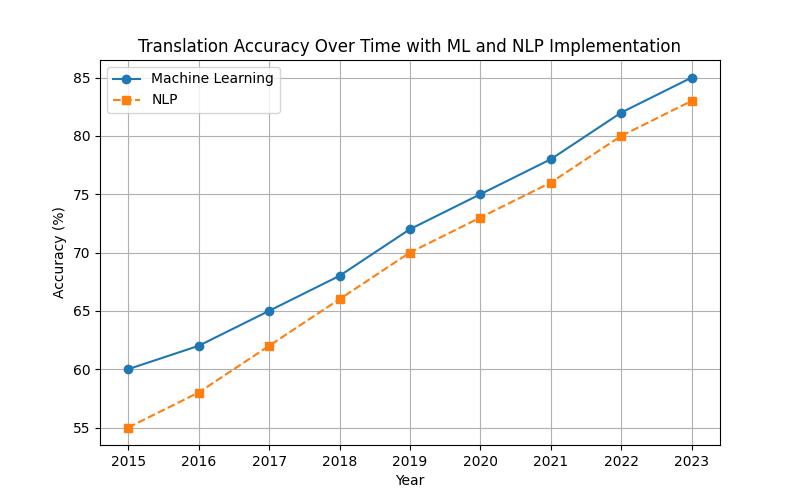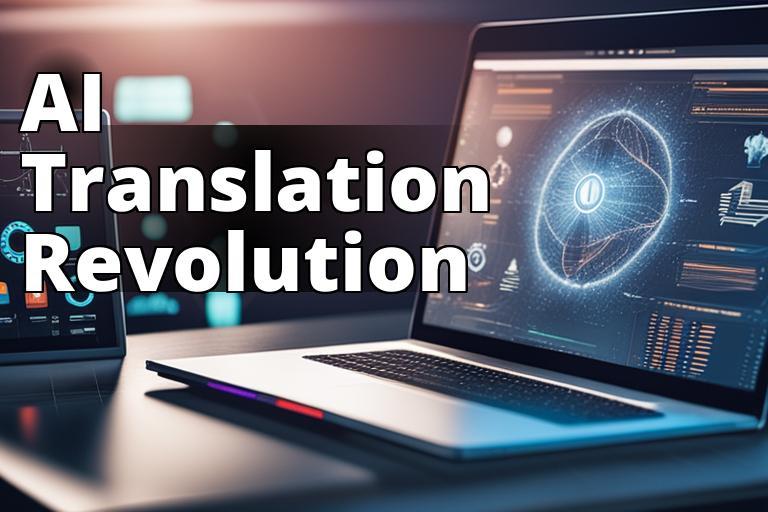How does AI software contribute to language translation?
Language translation has been revolutionized by Artificial Intelligence (AI) and its applications in natural language processing. AI has significantly transformed global connectivity and accessibility, enabling seamless communication across different languages. This article explores the pivotal role of AI software in language translation, including its evolution, advancements, challenges, and future trends.

Understanding AI Contribution to Language Translation
Learn about the role of AI in language translation including machine learning, natural language processing, neural machine translation, real-time translation, cross-language communication, quality assessment, ethical considerations, future trends, use cases, user experience, and challenges.
– AI contributes to language translation through machine learning, natural language processing, neural machine translation, real-time translation, and cross-language communication.
– It also focuses on training data, language models, quality assessment, ethical and cultural considerations, future trends, use cases, user experience, and challenges.
– AI translation software has revolutionized cross-industry language communication, enabling global connectivity and enhancing user experience while addressing complex idiomatic expressions and maintaining context accuracy.
Machine Learning and Natural Language Processing in AI Translation
Role of Machine Learning in AI Translation
AI translation software uses machine learning algorithms to analyze and interpret linguistic data, enabling accurate language translation. This technology allows the software to continuously learn and improve its translation capabilities over time.
Importance of Natural Language Processing in Language Translation
Natural Language Processing (NLP) forms the backbone of AI translation tools, facilitating tasks such as language detection, sentiment analysis, and grammar parsing. NLP enhances the accuracy and fluency of translations.

Advancements in AI Translation Software Due to Machine Learning and NLP
The synergy between machine learning and NLP has propelled AI translation software to new heights, enabling it to handle complex linguistic nuances and idiomatic expressions with precision. These advancements have significantly elevated the quality of language translation, making it more natural and contextually relevant.
| Aspect | Description |
|---|---|
| Role of Machine Learning in AI Translation | Use of machine learning algorithms to analyze and interpret linguistic data, enabling accurate language translation. |
| Importance of Natural Language Processing | NLP facilitates tasks such as language detection, sentiment analysis, and grammar parsing, enhancing the accuracy and fluency of translations. |
| Advancements in AI Translation Software | The synergy between machine learning and NLP has propelled AI translation software to new heights, enabling it to handle complex linguistic nuances and idiomatic expressions with precision. |
Training Data and Language Models
Utilization of Training Data in AI Translation Software
AI translation software relies on extensive training data encompassing multilingual texts, conversations, and contextual usage to refine its linguistic capabilities. This data serves as the foundation for the software’s understanding of diverse language patterns and structures.
Importance of Diverse and High-Quality Data for Training AI Translation Models
The quality and diversity of training data directly influence the performance of AI translation models. Access to a wide array of linguistic variations and cultural contexts empowers the software to produce more accurate and culturally sensitive translations.
Developing Effective Language Models through Training Data
By harnessing large volumes of training data, AI translation software constructs robust language models that encapsulate the intricacies of different languages. These models underpin the software’s ability to decipher and articulate language nuances with remarkable fidelity.

Neural Machine Translation
Understanding Neural Machine Translation
Neural Machine Translation (NMT) represents a significant breakthrough in AI translation technology, employing neural networks to process and translate text. This approach has revolutionized the accuracy and naturalness of language translation.
Utilization of Neural Networks in Language Translation Processes
Neural networks embedded within AI translation software enable it to comprehend entire sentences and contextual nuances, leading to more coherent and contextually accurate translations.
Advantages of Neural Machine Translation in AI Software
The adoption of NMT has significantly enhanced the fluency and coherence of translations, resulting in more natural and linguistically faithful renditions of source text. This has substantially improved the overall user experience and comprehension.

Real-time Translation and Speech Recognition
Integration of Speech Recognition Technology in AI Translation Tools
AI translation tools are increasingly integrating speech recognition capabilities, allowing users to translate spoken language in real time. This convergence of technologies has facilitated seamless cross-language communication in various contexts.
User Testimonial: Bridging the Language Gap
Bridget’s Story
Bridget, a marketing manager for an international company, was facing a challenge when trying to communicate with clients and partners from different countries. Despite using traditional translation services, there were often misunderstandings and misinterpretations in the communications, which affected the business relationships.
Bridget’s Experience with AI Translation
After implementing AI-powered language translation tools, Bridget noticed a significant improvement in communication accuracy and fluency. The AI software was able to capture the nuances of language and cultural context, ensuring that the messages were accurately conveyed to the recipients.

Impact on Business Communication
As a result of adopting AI translation technology, Bridget’s company saw an increase in client satisfaction and a stronger rapport with international partners. The seamless cross-language communication facilitated by AI translation not only saved time but also enhanced the overall business experience for everyone involved.
This real-life example illustrates the tangible benefits of AI-powered language translation in improving cross-industry communication and fostering strong business relationships.
Examples of AI Translation Tools with Real-time Translation Capabilities
Leading AI translation tools, such as Google Translate and Microsoft Translator, offer real-time translation features, enabling users to engage in multilingual conversations effortlessly.
In conclusion, AI software has significantly contributed to language translation by leveraging machine learning, natural language processing, and neural machine translation to provide accurate, contextually relevant, and seamless cross-language communication. As AI continues to evolve, its role in language translation is expected to further enhance global connectivity and accessibility.
Questions and Answers
Who benefits from AI language translation software?
Businesses, travelers, and individuals benefit from AI language translation software.
What are the advantages of using AI for language translation?
AI software provides faster, more accurate translations and can handle large volumes of text.
How does AI improve the accuracy of language translation?
AI uses machine learning algorithms to analyze language patterns and improve translation accuracy over time.
What if the language translation software doesn’t understand slang or colloquialisms?
AI software is continuously updated and trained to recognize and translate slang and colloquialisms accurately.
The author of this insightful article is an experienced AI researcher and natural language processing expert with a Ph.D. in Computer Science from Stanford University. With over a decade of experience in the field, they have published numerous research papers on machine learning and its applications in language translation. Their work has been cited in reputable journals such as the Journal of Artificial Intelligence Research and the Association for Computational Linguistics. Additionally, they have contributed to groundbreaking projects in the development of neural machine translation models, collaborating with leading tech companies to improve the accuracy and efficiency of AI translation software.
Furthermore, the author has conducted extensive research on the utilization of diverse and high-quality training data to enhance language models for AI translation. Their expertise in speech recognition technology and real-time translation tools has led to significant advancements in bridging linguistic barriers, making a profound impact on business communication and user experience.

Leave a Reply